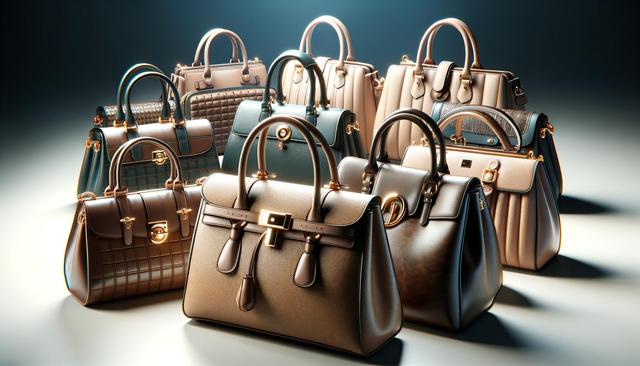The Appeal of Designer Handbags
Designer handbags have long been associated with sophistication, quality, and timeless appeal. Unlike mass-produced bags, they often feature refined craftsmanship, luxurious materials, and attention to detail that set them apart. These handbags are more than just accessories; they are statements of taste and personal expression. Whether you’re heading to a meeting, brunch with friends, or an evening event, the right handbag can make a subtle yet impactful impression.
One of the key reasons designer handbags are so sought after is their ability to complement a variety of outfits. From classic leather totes to structured crossbody bags, these pieces are versatile and functional while also being stylish. Many fashion enthusiasts see them as investment pieces due to their durable construction and enduring styles. High-end materials like genuine leather, suede, and exotic skins are frequently used, giving each piece a unique texture and finish that stands the test of time.
Choosing the Right Style for Your Lifestyle
When selecting a designer handbag, it’s important to consider your daily needs and personal fashion preferences. Are you looking for something practical for everyday use or a standout piece for special occasions? The answer will guide your choice of size, shape, and material. For instance:
- A roomy tote or satchel is ideal for professionals or busy parents who need space for essentials and extras.
- A sleek clutch or mini bag works well for evening wear or formal events.
- A crossbody bag offers hands-free convenience for shopping, travel, or casual outings.
Additionally, consider the color palette of your wardrobe. Neutral tones like black, beige, or navy blend seamlessly with most outfits, while bold colors or patterns can serve as a focal point. Hardware details—such as buckles, zippers, and chain straps—also play a role in defining the bag’s character. Ultimately, the right handbag should reflect your lifestyle while enhancing your overall look.
Understanding Craftsmanship and Materials
One of the defining features of designer handbags is the level of craftsmanship involved in their creation. Most are handmade or crafted in small batches, allowing for rigorous quality control and meticulous attention to detail. Artisans often spend hours on each piece, ensuring that stitching, lining, and hardware are perfectly aligned and securely attached.
Materials play a significant role in both the look and longevity of a handbag. Common materials include:
- Full-grain leather: Known for its durability and natural appearance.
- Saffiano leather: Scratch-resistant and easy to clean, often used for structured bags.
- Suede: Offers a soft, matte finish but requires more care to maintain.
- Canvas and fabric blends: Lightweight and casual, suitable for everyday use.
High-quality materials not only enhance the bag’s appearance but also contribute to its resilience. When properly cared for, a designer handbag can last for years, making it an enduring part of your wardrobe.
Styling Tips for Everyday Elegance
Incorporating a designer handbag into your daily outfits doesn’t have to be complicated. These accessories are versatile enough to elevate even the simplest ensembles. Here are some styling tips to help you make the most of your investment:
- Pair a neutral-toned bag with a monochromatic outfit for a sleek, minimalist look.
- Use a brightly colored or patterned handbag to add interest to a neutral or basic outfit.
- Match your handbag’s hardware with your jewelry for a cohesive finish.
- Balance large handbags with streamlined clothing to avoid visual clutter.
Designer handbags can also be rotated seasonally. Lighter shades and fabrics work well in spring and summer, while darker tones and richer textures are better suited for fall and winter. With thoughtful pairing, your handbag can become the centerpiece of your look or a complementary accent that pulls your outfit together.
Maintaining and Caring for Your Handbag
Proper care is essential to preserve the beauty and functionality of your designer handbag. While these pieces are designed with durability in mind, they still require attention to keep them looking their best. Start by storing your handbag in a dust bag or on a shelf away from direct sunlight and moisture. This prevents discoloration and warping.
Regular cleaning is also important. Use a soft, damp cloth to wipe away dirt and dust. For leather bags, consider using a conditioner every few months to maintain flexibility and sheen. Avoid overfilling your bag, as this can distort its shape and strain the handles. Additionally, rotate your handbags to reduce wear and tear on a single piece.
When not in use, stuff the bag with tissue paper or bubble wrap to help it retain its shape. Be mindful of where you place your handbag during daily activities—avoiding rough or dirty surfaces can greatly extend its lifespan. With proper maintenance, your designer handbag will remain a stylish and reliable accessory for years to come.


